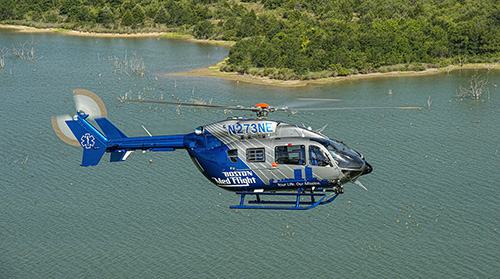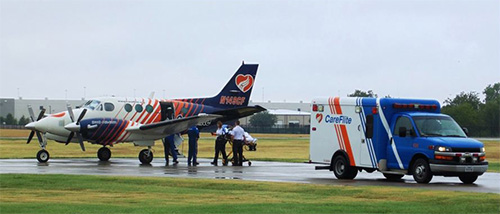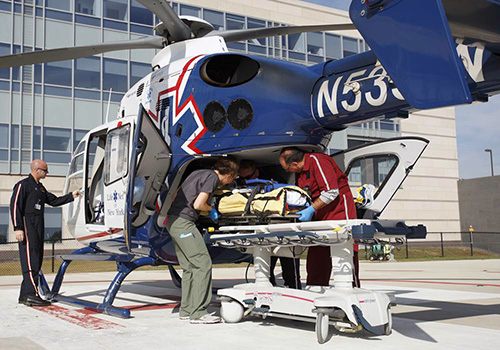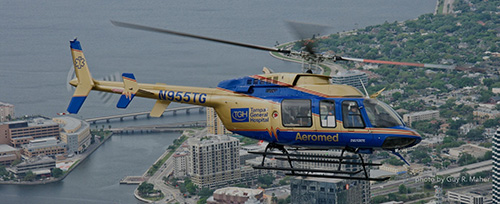
What does a Flight Nurse do?
Life flights are commonly known as medical evacuations that are meant to treat trauma patients. This kind of scenario is perhaps the most visible part of the job of a flight nurse. Life flights are resorted to when a patient’s life may become compromised using standard ground transportation.
The duties and roles of a flight nurse during life flights include:
- Effective communication with patients and team members
- Provide assessment, triage, treatment, and other immediate medical care to patients during air transport
- Maintain equipment and supplies on aircraft
- Maintain and organize paperwork and patient charts
- Perform resuscitation, insert IVs, provide first aid, and more while traveling to the destination
- May help the pilot with radio communication and other tasks
- Assist to safely get patients into and out of the aircraft
- Monitor vital signs
- Ensure the patient’s safety while onboard the aircraft
The actions of flight nurses have helped save lives in numerous cases. While it can be a stressful job, choosing this particular field is very rewarding as well.
Flight Nurse Salary
In the United States, a Flight Nurse has an average annual pay of $81,093. The annual average salary base for Registered Nurse Flight Transport ranges from $74,468 to $94,237. Total cash compensation per year is seen at $83,972.
This means that a flight nurse working anywhere in the United States has an annual base salary including incentives ranging from $74,468 to $94,237. The varied compensation depends on the location of the work area. Highly populated big cities in the United States give more compensation and incentives to flight nurses.
While recruitment agencies see annual salaries of flight nurses to be as high as $103,000 per year, there are also areas where salary can be as low as $59,000 /year. Yet, the agencies also see a current yearly salary bracket ranging from $64,000 to $99,000. The variation of salaries suggests that years of experience and location are the factors that affect the pay scale of flight nurses.
A Day in the Life of a Flight Nurse
A typical day of a flight nurse starts with the hand-off report before going up to the plane to do pre-flight checks. Pre-flight checks mean checking to make sure that everything needed is on board. Then it’s time to do the briefing and a peer review of charts if a flight or two happened on a previous shift.
5 things that can happen with Flight Nurses during a 24-hour shift:
1. Commute
Rural areas are the usual stations for almost all aircraft. This is done because big medical facilities are not readily accessible to remote areas. As a flight nurse, commuting is a way of life if you happen to live away from the assigned area. It’s not a hard schedule for flight nurses with shifts taking only two days a week.
2. 24-hour Shifts
Some nurses may think that flight nurses have it good since they get to sleep even when they are on duty. While there are paid slack times, a flight nurse also has to be ready for action at any moment of the shift. Sometimes, a flight nurse will have free time for almost their entire shift. However, an emergency can happen two hours before going off shift. When this occurs, a flight nurse has to ready to render an additional 24-hour shift.

3. Eating when you can!
Flight nurses have learned to pack snacks away in the aircraft or their suits. Emergencies can happen anytime which means that a flight nurse has to eat where he can and when he can. Back-to-back flights are expected scenarios in the life of a flight nurse and skipping a meal is not the option.
4. Partnerships
Hospitals have a pecking order that different types of nurses follow. Working with a partner/s is the order of the day out in the field. There is no rank-pulling for all medical team have their designated work to do. The most important thing to establish between the medical team is open communication lines. Excellent communication among the team is the best way to take care of the various encountered medical emergencies.
5. Mistaken identity
People will be curious enough to ask flight nurses if they are the pilots of the plane when they see the suits they wear. People also become disinterested once they know that they are flight nurses instead. This should not discourage any flight nurse. People just do not understand the challenging role flight nurses do to save lives.
How to Become a Flight Nurse
A nursing degree to ultimately become a licensed RN is the first requirement for one to become a flight nurse. Most employers also require an RN hands-on experience specifically in trauma and emergency settings. A valid passport and prior flight experience can sometimes be a requirement as international flights may be involved.
The following are common requirements for a transport or flight nurse:
- 3 to 5 years work experience in Trauma/ICU/ED
- Capable to work independently with other team members in a confined space
- Advanced knowledge in critical care including experience in using ventilators
- Physically Fit to fulfill the physical demands of the job
- Capable of meeting 24/7 on-call rotation, overtime, and varied shifts
- Excellent communication ability with strong leadership skills.
- Ability to function in stressful situations.
- Adjustable skills to work seamlessly with multiple medical personnel.
Flight Nurse Educational Requirements
Flight nurses can earn their nursing degree by taking:
- A 2-year ADN course
OR
- A 4-year BSN program
The NCLEX-RN exam must be taken and passed right after graduation to become licensed. An MSN degree can be pursued as a continuing education option. Having a Master’s degree can prove invaluable when it comes to higher education requirements and qualifications.
If you’re currently a Licensed Vocational Nurse, there are many LVN to RN programs available. If you live on the west coast, there are over 150 accredited LVN to RN programs in California.
Beginning a career in either ICU or emergency room settings to gain critical care experience is recommended for nurses looking to eventually become flight nurses.
There are employers in the healthcare sector who prefer nurses with a few certifications. The preferred certifications include:
- CFRN or Certified Flight Registered Nurse
- BLS or Basic Life Support
- CCRN or Critical Care Nurse (strongly preferred when CFRN is yet to be completed) or CEN (Certified Emergency Nurse)
- ACLS or Advanced Cardiac Life Support
- TPATC or Transport Professional Advanced Trauma Course
- PALS or Pediatric Advanced Life Support
- Disaster Management certification
- Life support certifications in geriatric, neonate, pediatric, etc.

Final Thoughts On Flight Nursing
There is no formal nursing school degree in Flight Nursing. A nurse can be placed squarely for the job when he/she goes through a professional and educational track. The first step is education. The second is gaining experience in preferred areas such as ICU/Trauma/ER units.

The steps towards a flight nurse career may look unending. Yet, the rewards more than justify the long and hard climb.
The right time to start is now. Contact your local nursing college or university to find out the process of launching a career as a transport or flight nurse.

